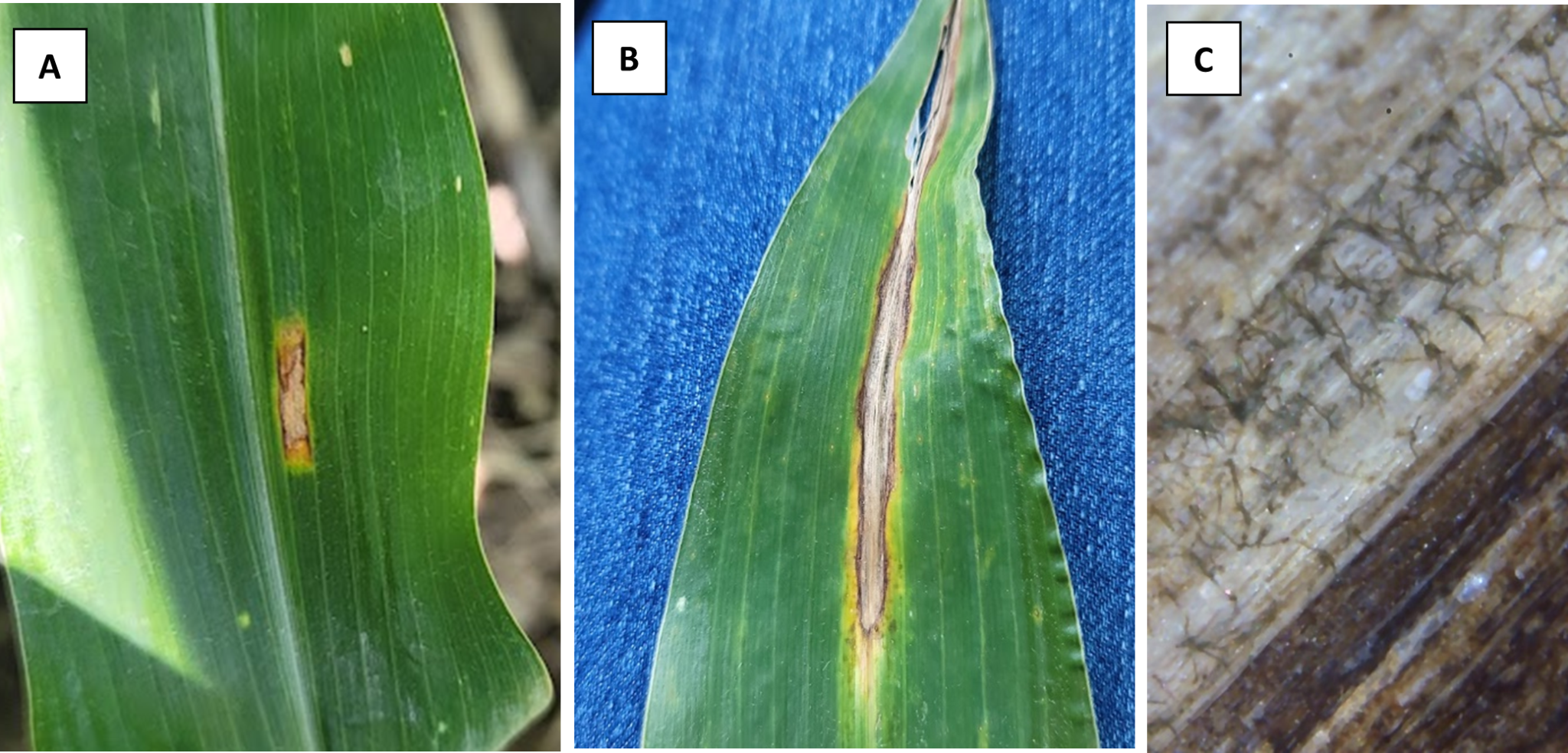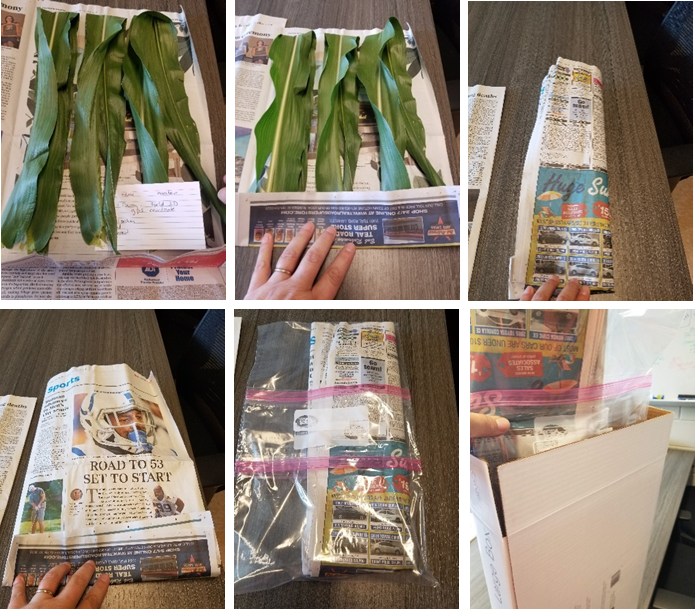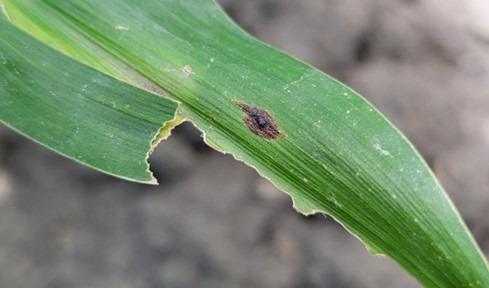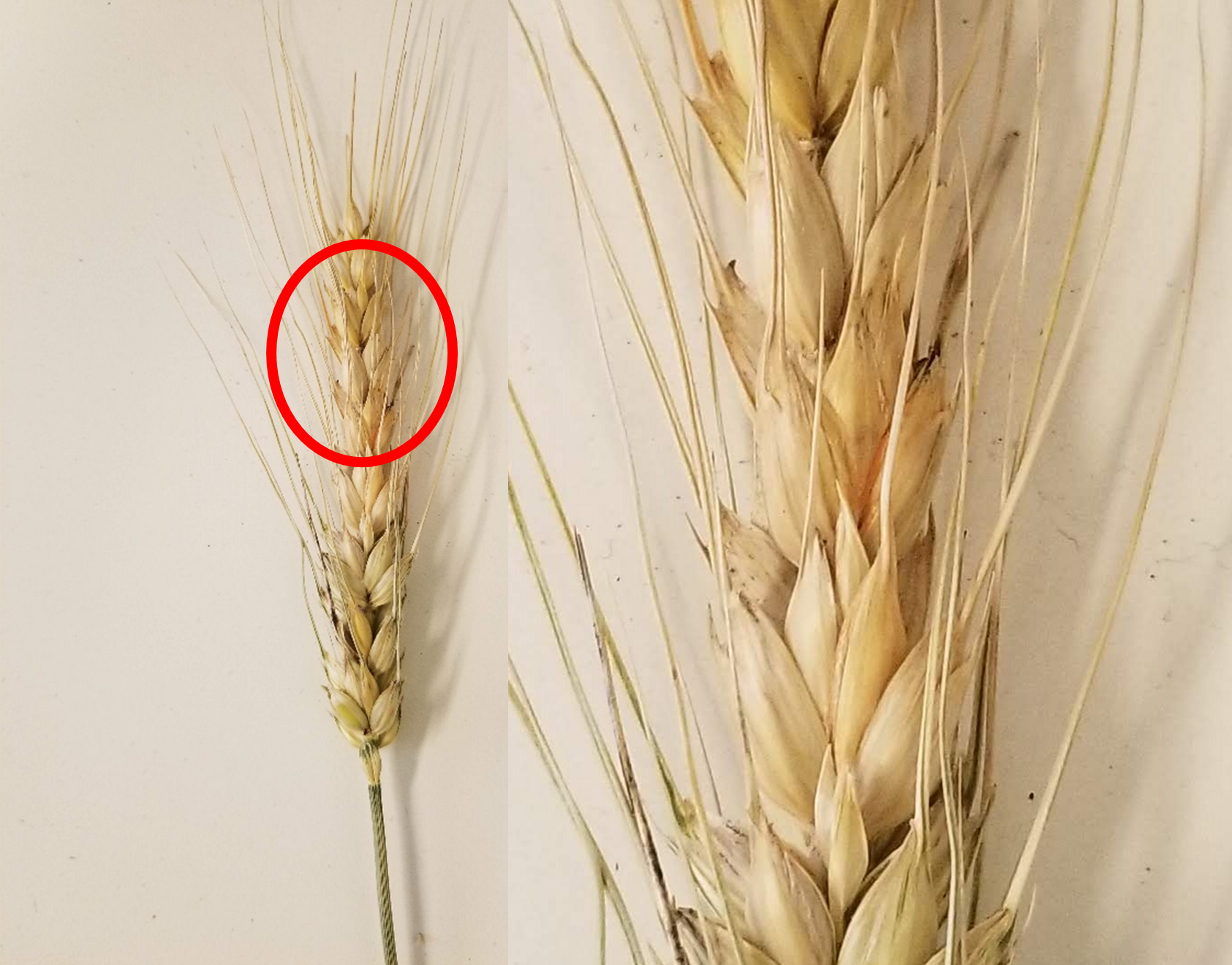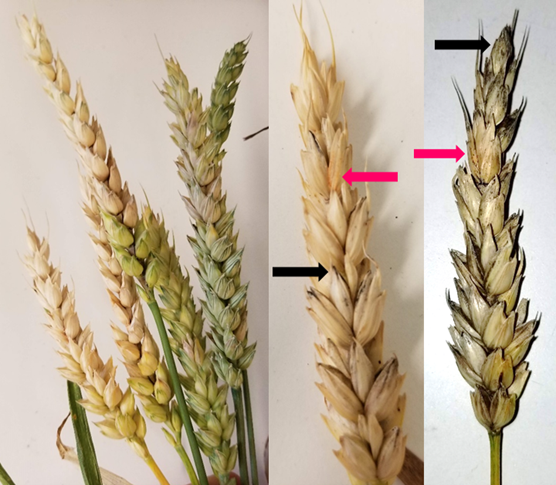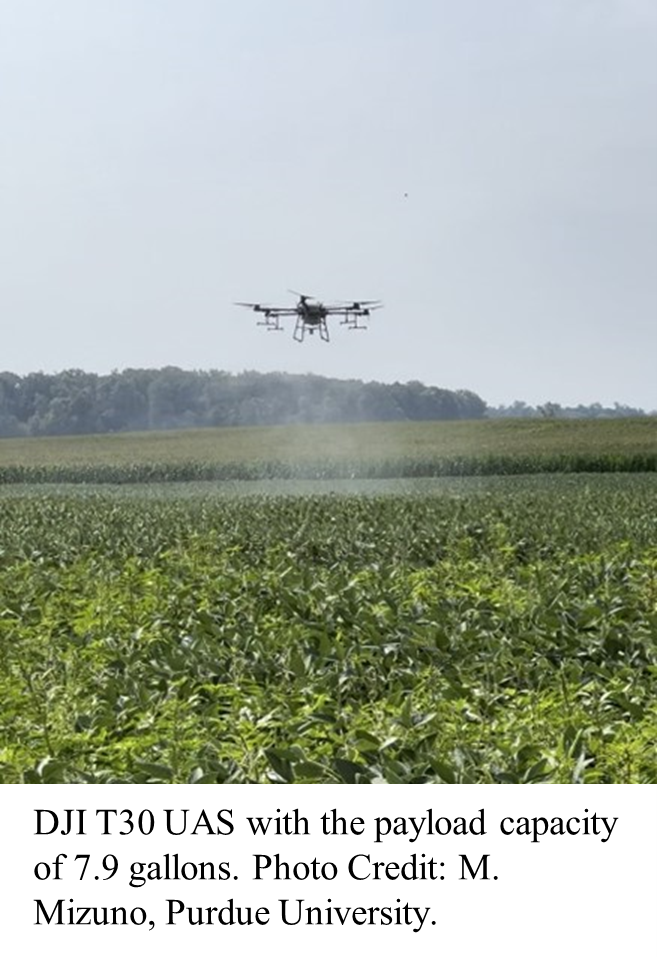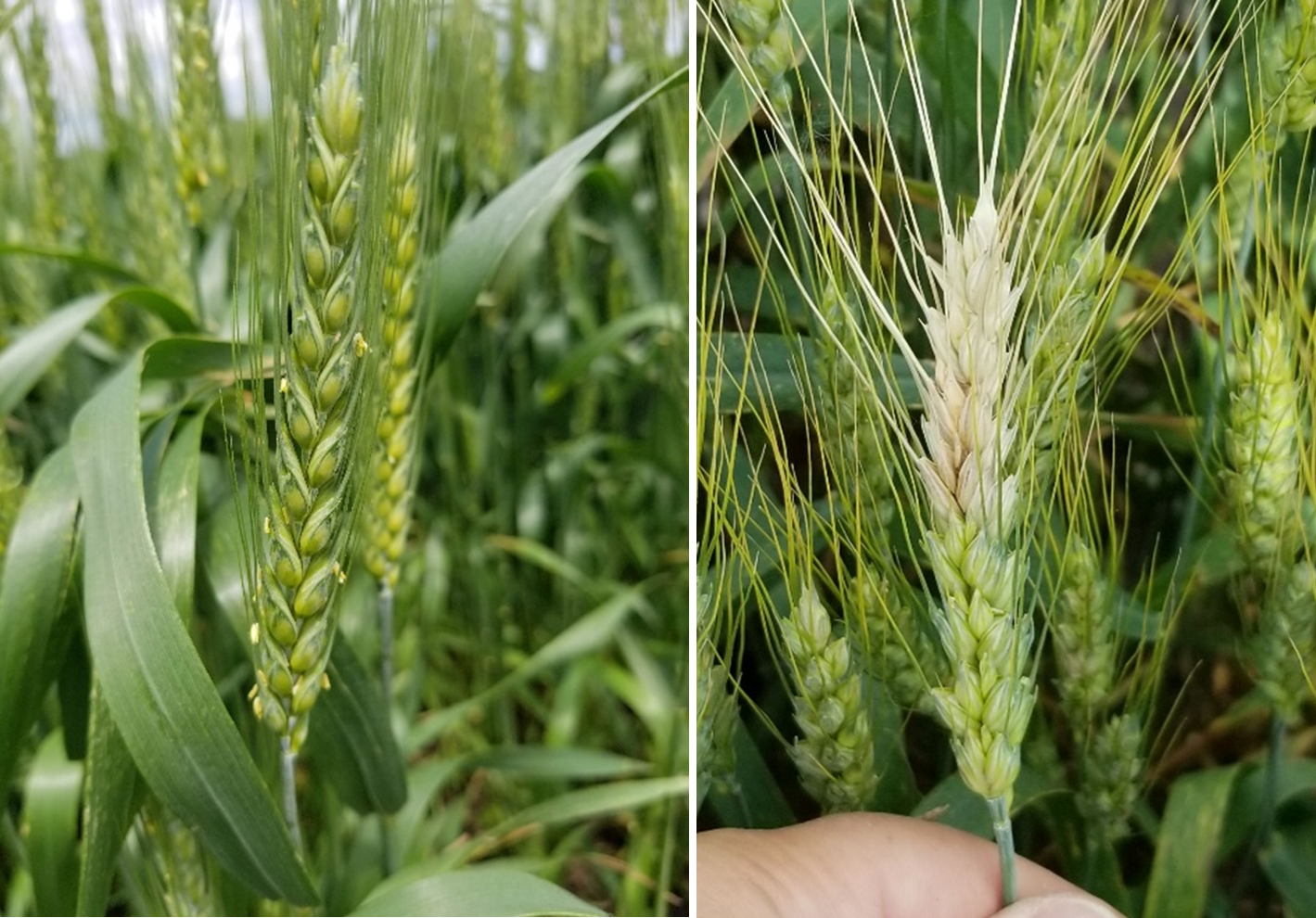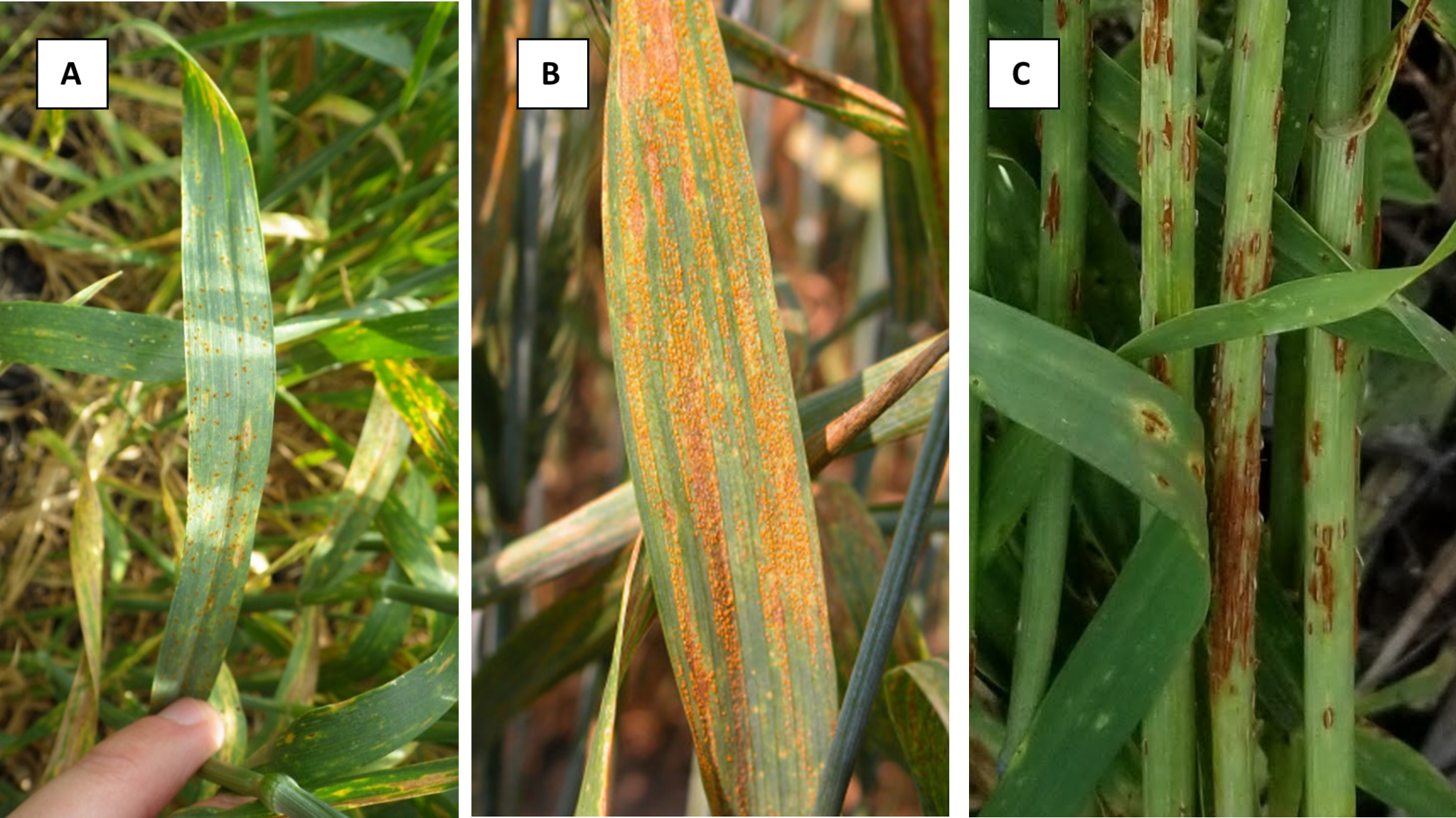
Red crown rot of soybean has become a new concern this season in Indiana after a few localized occurrences have been found in previous years (see map, Figure 1A). We also have our first reports for 2024. This disease is caused by the soilborne fungus, Calonectria ilicicola. At this point in the field season, we are on the hunt to determine how widespread the issue may be here in Indiana. Therefore, we need your help in documenting red crown rot and collecting samples. What to look for: The disease may appear in patches in a field similar to our other soilborne diseases such as sudden death syndrome (SDS) and brown stem rot (Figure 1B). Early foliar symptoms may also mimic these diseases, which include chlorosis (yellowing) and necrosis of leaf tissue between leaf veins (Figure 1C). Therefore, it is important to take a few plant samples and check out the[Read More…]


